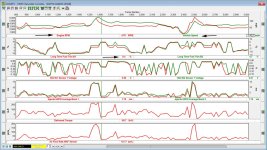Got a very odd thing going on with my 96 LT1. I can get in and start it and drive it for as long as I want with no issue. However, if I stop for a short while (up to a few hours) and then get back in and start it it will illuminate the service now light after a short while. Fortunately the 96 has OBD2 so I can pull the codes. I get P0171 Lean bank 1 P0174 Lean bank 2 and very occasionally P441 Evaporative emissions control system incorrect purge flow.
Sometimes it will be just be one bank but mostly both. The P0441 code comes up only once in a while and never without the other 2.
If I drive the car without stopping and then leave it overnight it wont throw codes next time I drive so it seems to be only when the engine is started while warm. If I leave the car running and clear the codes they wont reappear unless I turn the car off and do another warm start so it must be something that happens then clears immediately.
Any thoughts on where to start looking? It's more an annoyance than a real issue.
Sometimes it will be just be one bank but mostly both. The P0441 code comes up only once in a while and never without the other 2.
If I drive the car without stopping and then leave it overnight it wont throw codes next time I drive so it seems to be only when the engine is started while warm. If I leave the car running and clear the codes they wont reappear unless I turn the car off and do another warm start so it must be something that happens then clears immediately.
Any thoughts on where to start looking? It's more an annoyance than a real issue.

